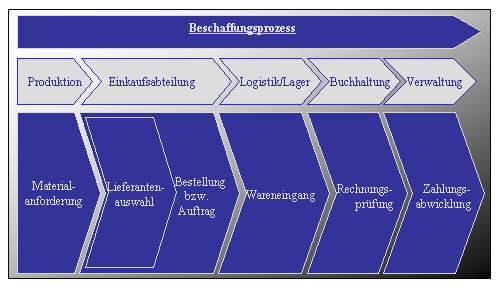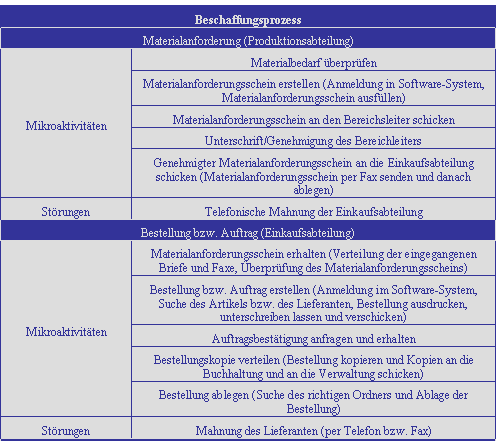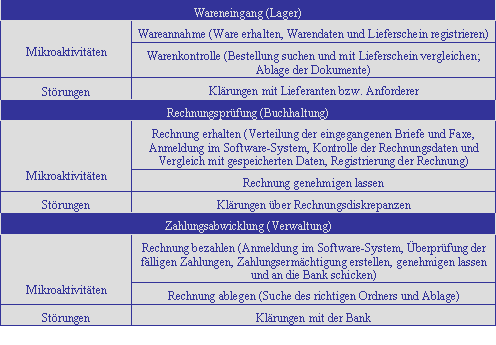
Fig. 2: The main activities of the traditional procurement process.
2 The traditional procurement
2.3 The activities of the procurement process
To understand the enterprise-internal procurement structure the individual procurement activities are described here, whereby also the most frequent process disturbances and possibly arising problems are mentioned.
With respect to the procurement process the customer GmbH one can differentiate six activities: material requirement, selection of suppliers, order and/or order, incoming goods, audit and conclude payment operations.



|
Top| Home| << Back | Next >>
/en/home.php" TARGET="_blank">>> Home Page << |